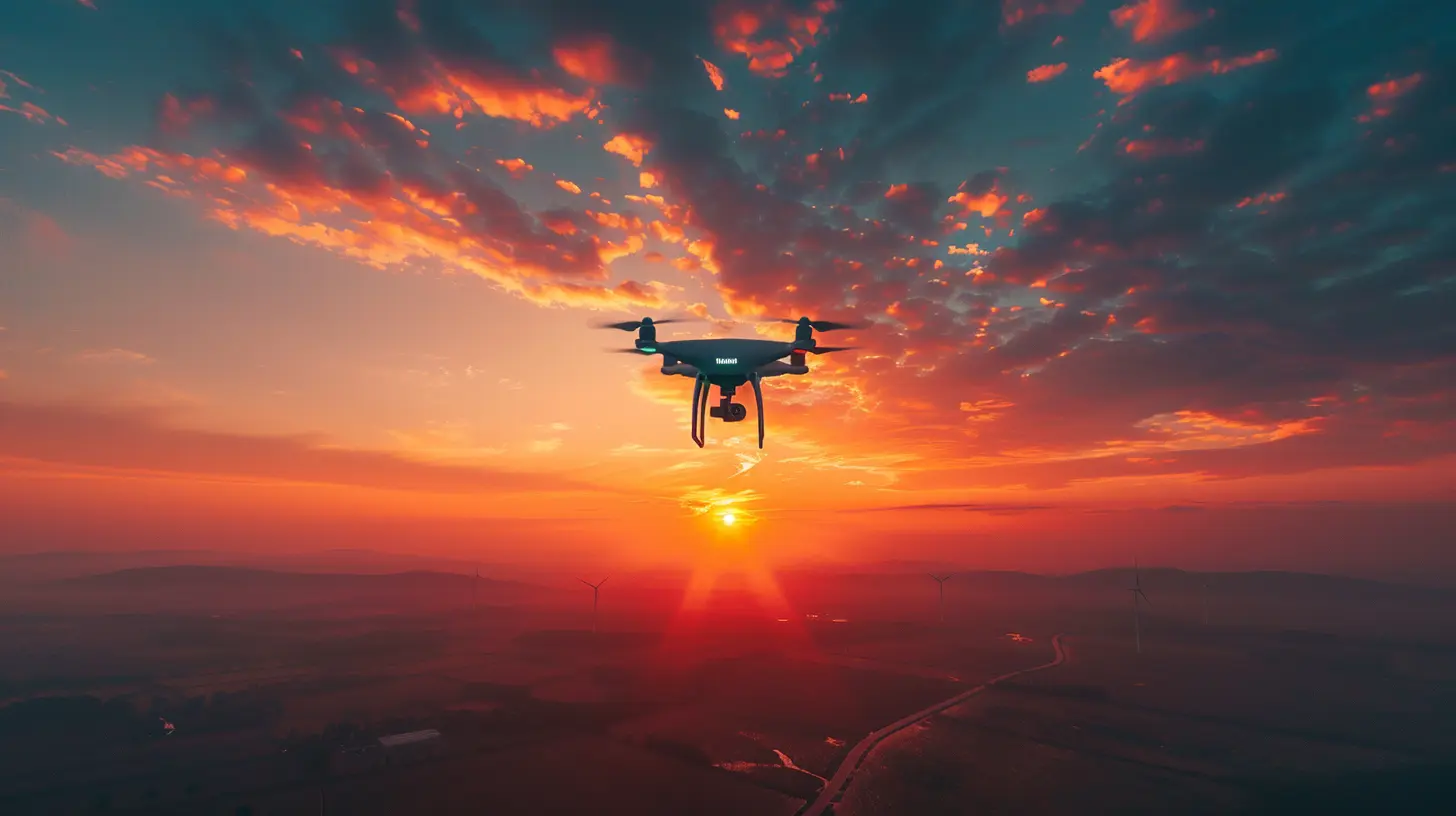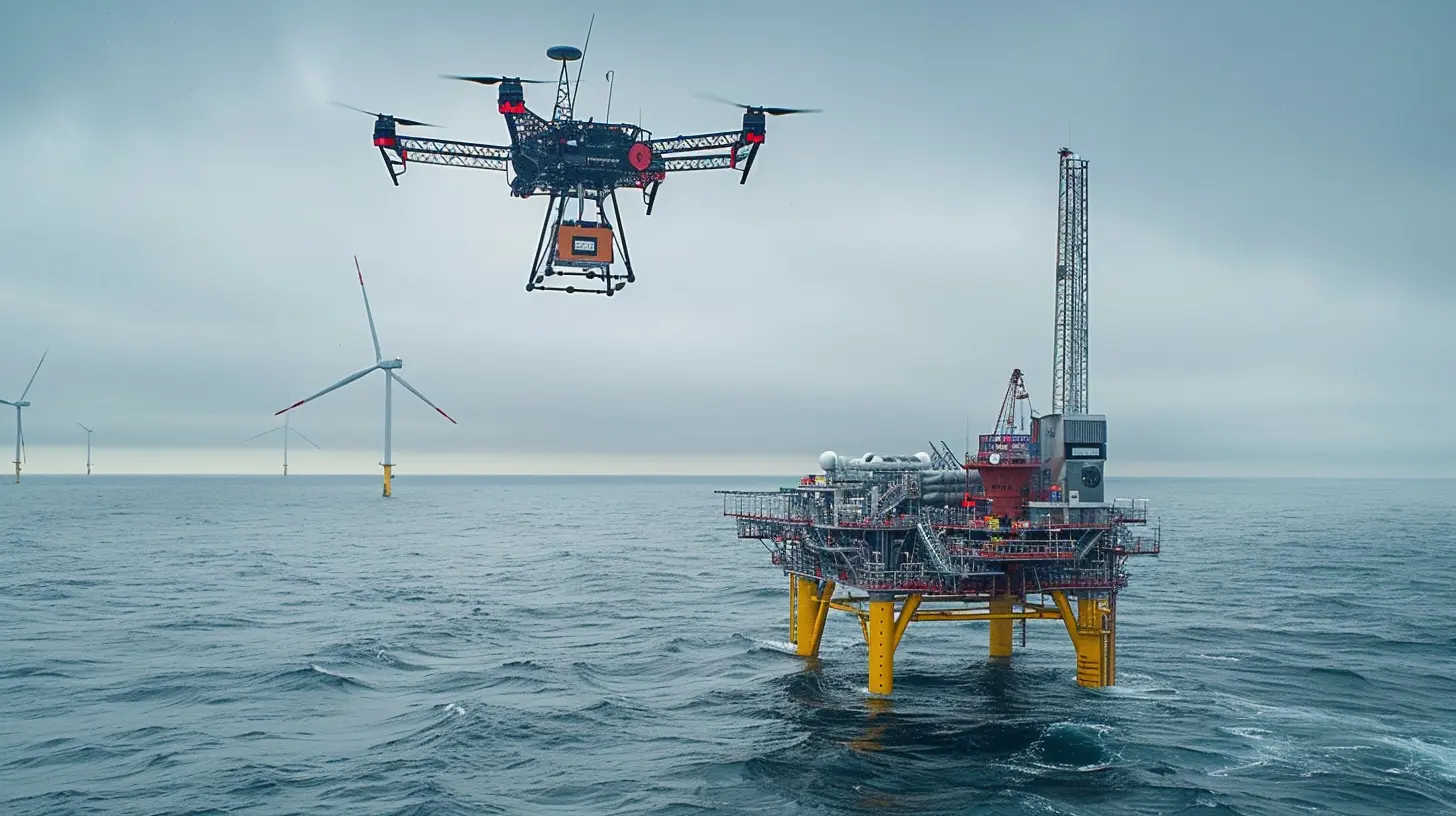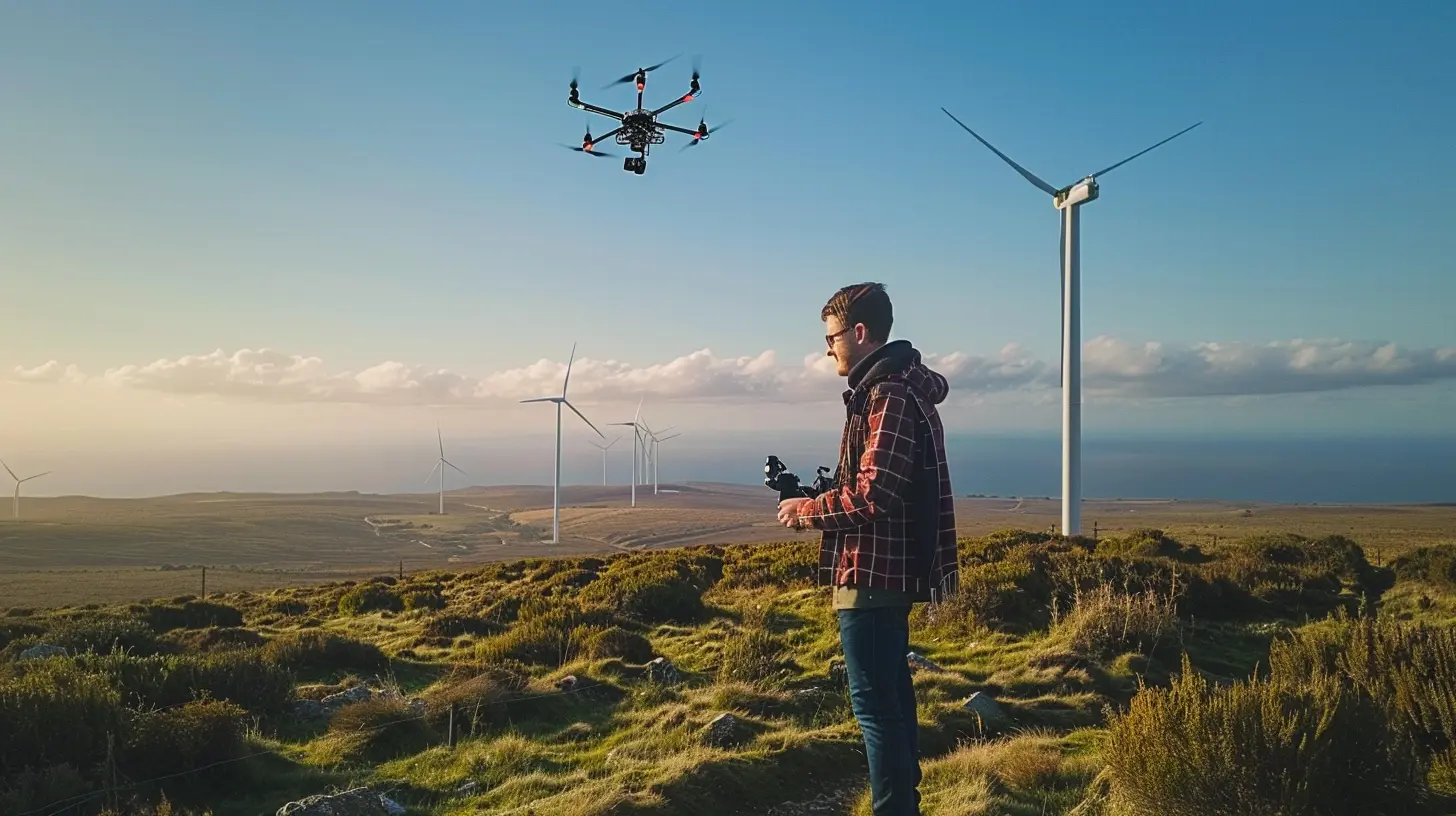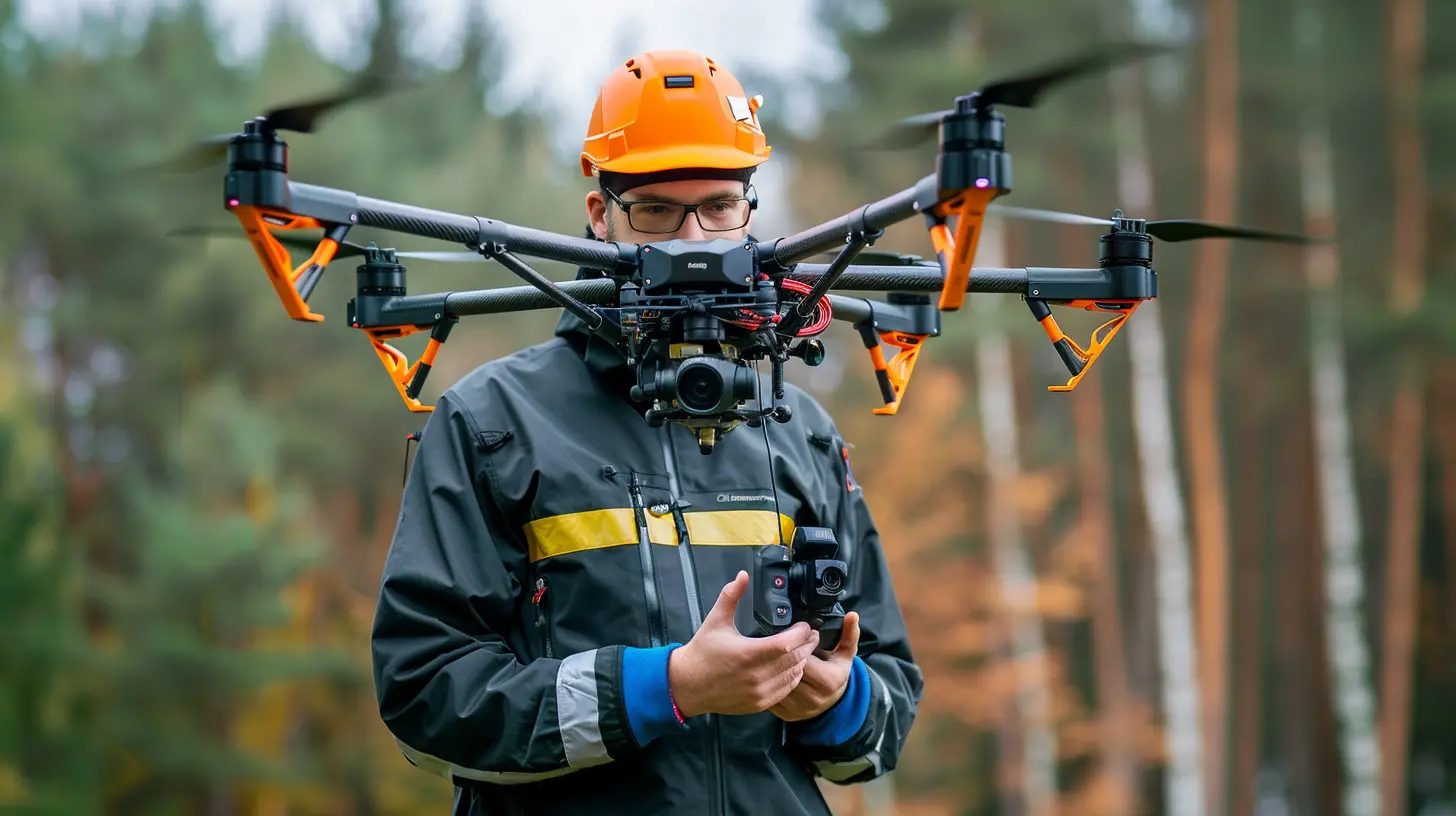How Drones Are Improving Wind Turbine Maintenance
23 August 2025
Wind energy is booming, isn’t it? Everywhere you look, massive wind turbines are dotting the landscape, spinning gracefully in the wind, and generating clean, renewable energy. It’s a beautiful sight, but maintaining these towering giants isn’t as simple as it looks. The turbines are often in remote locations and stand hundreds of feet tall, making inspections and repairs a serious challenge. But what if I told you that drones are swooping in to save the day? Yup, drones are transforming the way we maintain wind turbines, making the entire process faster, safer, and more efficient.
Let’s dive into how these flying gadgets are revolutionizing wind turbine maintenance.

The Growing Importance of Wind Energy
Before we get into the drone talk, let’s quickly touch on why this is such a big deal. Wind energy has become one of the fastest-growing sources of renewable energy worldwide. Countries are increasingly turning to wind farms to reduce their reliance on fossil fuels. In fact, some nations are racing to build massive offshore wind farms to power entire cities!With this rapid expansion comes the inevitable need for maintenance. Wind turbines, like any other piece of machinery, require regular inspections and repairs to ensure they operate efficiently. And here's the thing: the larger the wind farm, the more complex and time-consuming the maintenance process becomes.
Traditionally, wind turbine maintenance has been a tough job. It involves sending technicians up the turbine blades, which can be as tall as a skyscraper, in less-than-ideal weather conditions. Not only is this method slow and expensive, but it’s also dangerous. Enter drones—the game-changer.

How Drones Are Making Wind Turbine Maintenance Safer
Let’s be real for a moment: climbing a 300-foot wind turbine isn’t exactly a walk in the park. Technicians face all kinds of hazards, from high winds to icy conditions and even the risk of falls. Safety is always a top concern, and that’s where drones come in.Drones, or Unmanned Aerial Vehicles (UAVs), can fly up to the top of these turbines and carry out inspections without anyone having to leave the ground. That means fewer risks for human workers. Drones can easily navigate around the towering structures, capturing real-time data and high-resolution images of the turbine blades, nacelles, and towers.
Think about it—no more dangerous climbs, no more dangling on ropes hundreds of feet in the air. Instead, you have a drone operator safely controlling the inspection from the ground. It’s like upgrading from a flip phone to a smartphone; everything becomes more efficient and far less risky.

Speeding Up the Inspection Process
Speed is everything, right? When a turbine is out of commission for maintenance, that’s lost energy production and, ultimately, lost revenue. Traditional methods of wind turbine inspection are time-consuming. A technician might spend hours or even days just inspecting a single turbine, especially if weather conditions are tricky.Drones can significantly speed up this process. Instead of taking days, drones can inspect multiple turbines in just a few hours. These flying marvels are equipped with advanced cameras and sensors that can capture detailed images and even thermal data in real-time. This means operators can quickly identify any potential issues, such as cracks or wear on the blades, and schedule repairs before they become major problems.
It’s like when you’re in a rush to get somewhere and you use Google Maps to find the quickest route—drones are the Google Maps of wind turbine maintenance. They get you to your destination (in this case, a fully operational turbine) faster and more efficiently.

The Role of Advanced Sensors and AI
Drones aren’t just flying cameras, though—oh no, they’re much smarter than that. Many drones used in wind turbine maintenance are equipped with advanced sensors like LiDAR (Light Detection and Ranging) and thermal imaging. These sensors can detect problems that the human eye might miss. For example, thermal cameras can identify areas of the turbine that are overheating, which might indicate mechanical issues.And here’s where it gets even cooler (pun intended): advanced drones can be integrated with Artificial Intelligence (AI) algorithms. These AI-powered drones can analyze the data they capture in real-time, identifying potential issues and even predicting future failures. It’s like having a mechanic who can see into the future!
For instance, AI can track the wear patterns on turbine blades and predict when they might need to be replaced or repaired, allowing for smart, proactive maintenance. This helps companies avoid costly breakdowns and extend the lifespan of their turbines.
Cost Savings: More Than Just Time
Okay, so we know drones save time, but what about money? The cost of maintaining wind turbines the old-fashioned way can be pretty steep. Between the labor costs, the specialized equipment, and the downtimes, it quickly adds up.Drones drastically cut down on these expenses. For starters, you don’t need to hire as many technicians or rent costly cranes to hoist people up to the turbines. Plus, because drones can spot problems early, you can fix issues before they snowball into expensive repairs.
Think of it like this: if you get your car serviced regularly, you can catch small problems before they turn into major engine failures. Drones are like the regular check-up for wind turbines—they help catch little issues before they become big, expensive headaches.
Environmental Benefits of Using Drones
We can’t talk about wind energy without touching on its environmental benefits, right? Wind turbines are already helping to reduce carbon emissions by providing clean, renewable energy. But did you know that using drones for maintenance makes the process even greener?Traditional wind turbine maintenance often requires trucks, cranes, and other heavy machinery, all of which contribute to carbon emissions. Drones, on the other hand, are battery-powered and produce zero emissions during their operation. By reducing the need for heavy machinery and cutting down on maintenance time, drones are making wind energy an even more sustainable option.
So, not only are drones saving companies time and money—they’re also giving the planet a little extra love. It’s a win-win!
Reducing Downtime and Maximizing Efficiency
One of the biggest challenges in wind energy is minimizing downtime. When a turbine isn’t running, it’s not generating electricity, which means it’s not making money. Drones help reduce downtime by allowing for quicker inspections and faster repairs.Because drones can quickly identify issues, technicians can get to work on fixing them sooner. In some cases, drones are even being used to assist in the repair process. For example, drones can carry small tools and parts to hard-to-reach areas, reducing the need for cranes and scaffolding.
It’s like having a personal assistant who not only points out what needs fixing but also hands you the tools to do the job. This increased efficiency means wind farms can operate at peak performance for longer periods.
Offshore Wind Farms: A Perfect Fit for Drones
Offshore wind farms are becoming more common, and while they offer plenty of benefits in terms of energy production, they also present unique challenges for maintenance. Inspecting and repairing turbines that are miles out to sea is no easy task. Bad weather, high waves, and remote locations make traditional maintenance methods even more difficult.Drones are perfectly suited for offshore wind farms. They can fly out to these remote locations and carry out inspections without the need for boats or helicopters. This not only reduces costs but also makes offshore wind farms more viable in the long term.
Imagine trying to repair your boat while you’re still at sea. Sounds tough, right? Now imagine a drone flying out to you, inspecting your boat, and telling you exactly what’s wrong. That’s essentially what drones are doing for offshore wind turbines.
Challenges and Future of Drone Technology in Wind Turbine Maintenance
Of course, like any technology, drones aren’t without their challenges. For one, there are still regulatory hurdles to clear. In many countries, there are strict rules about where and how drones can be flown, particularly when it comes to commercial operations.Then there’s the issue of weather. Wind turbines are often located in areas with—you guessed it—lots of wind. High winds and drones don’t always mix well, so operators need to be cautious about when and where they fly.
But despite these challenges, the future of drone technology in wind turbine maintenance looks incredibly bright. As drones become more advanced, we’re likely to see even more improvements in their capabilities. AI will continue to play a bigger role, and we might even see fully autonomous drone fleets handling wind turbine maintenance from start to finish.
Who knows? In a few years, drones might not just be inspecting wind turbines—they might be repairing them too!
Conclusion: The Sky’s the Limit
Drones have undeniably changed the game when it comes to wind turbine maintenance. They’re making the job safer, faster, cheaper, and more efficient. With the rise of AI and advanced sensors, drones are becoming indispensable tools in the renewable energy sector.As the world continues to shift towards cleaner energy sources, the role of drones in wind turbine maintenance will only grow. They’re helping to ensure that wind farms operate at peak efficiency, ultimately contributing to a more sustainable future.
So, the next time you see a wind turbine spinning gracefully in the distance, remember that there might just be a drone nearby, keeping everything in tip-top shape.
all images in this post were generated using AI tools
Category:
Renewable EnergyAuthor:

Michael Robinson
Discussion
rate this article
1 comments
Renee McKee
Great article! It's inspiring to see how technology, like drones, is enhancing wind turbine maintenance. Their efficiency and precision could truly transform renewable energy practices for a more sustainable future.
August 28, 2025 at 2:36 AM

Michael Robinson
Thank you! I'm glad you found the article inspiring. Drones really are a game-changer for renewable energy maintenance!


